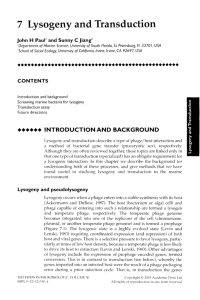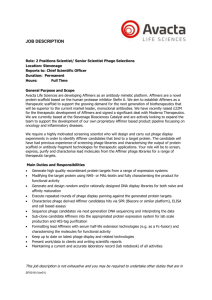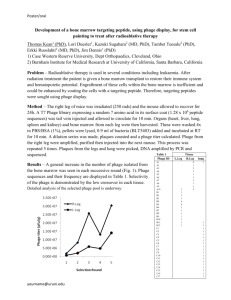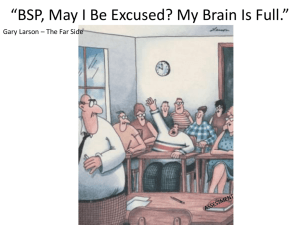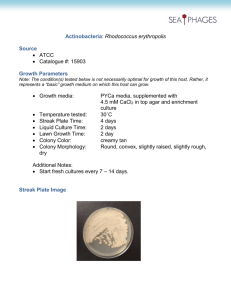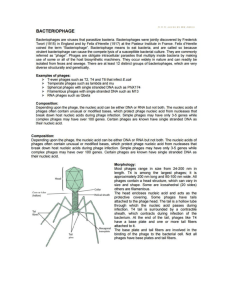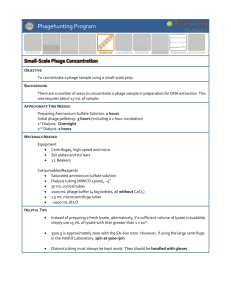Lecture 25 – viral genetics I. Viral genetics – an overview A. what is
advertisement
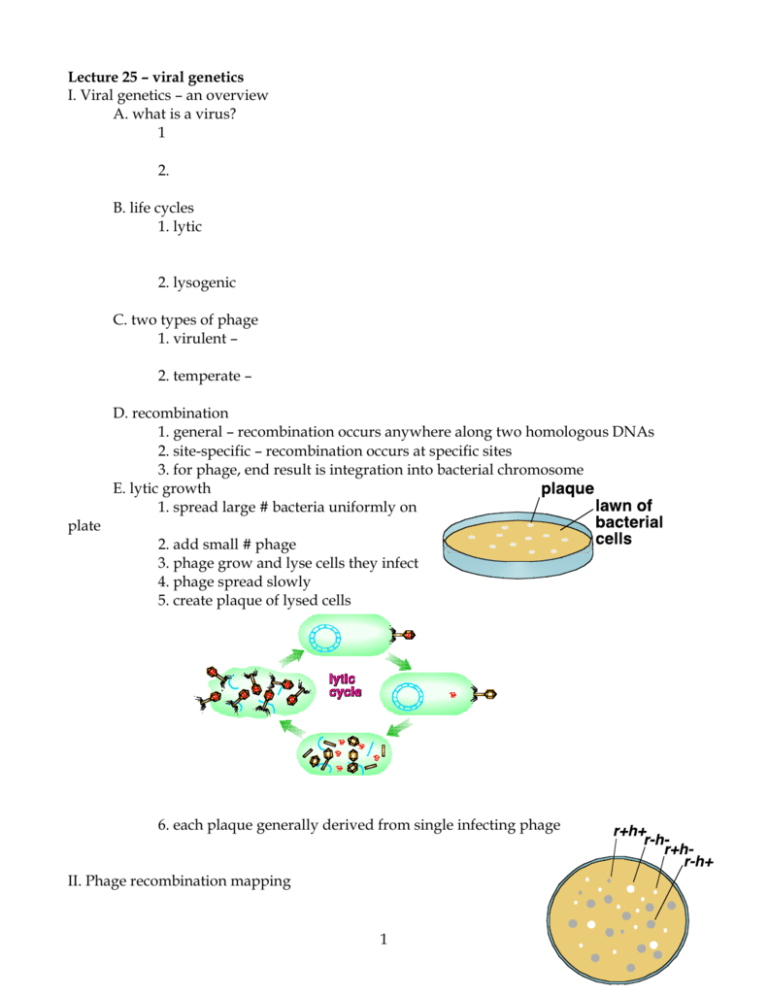
Lecture 25 – viral genetics I. Viral genetics – an overview A. what is a virus? 1 2. B. life cycles 1. lytic 2. lysogenic C. two types of phage 1. virulent – 2. temperate – D. recombination 1. general – recombination occurs anywhere along two homologous DNAs 2. site-specific – recombination occurs at specific sites 3. for phage, end result is integration into bacterial chromosome E. lytic growth 1. spread large # bacteria uniformly on plate 2. add small # phage 3. phage grow and lyse cells they infect 4. phage spread slowly 5. create plaque of lysed cells 6. each plaque generally derived from single infecting phage II. Phage recombination mapping 1 A. if 2 particles with different genotype infect same cell, can get recombination 1. frequency of recombination to determine map distance between genes III. Transduction A. discovery - Lederberg and Zinder testing for recombination in Salmonella - cross phe- trp- tyr- X met- hisgot occasional wild type - simple control: B. generalized transduction - cotransduction frequency can be used to generate linkage information 2 IV. Lysogeny A. discovery - some bacteria resist phage infection - resistant E. coli can cause lysis of nonresistant strains - Andre Lwoff – lysogenic cells stable - occasionally got spontaneous lysis - postulated particle that protects, spontaneously makes phage B. lysogeny - prophage - lysogen C. two general phage types - temperate - virulent - prophage - lysogen D. life cycle (temperate phage) 3 E. specialized transduction 1. at low frequency, phage can excise incorrectly to include E. coli DNA 2. these phage often defective, only replicate if “helper” phage present 3. integration site-specific, therefore host DNA from area of integration 4. only certain size DNA can be packaged into phage particles 4



